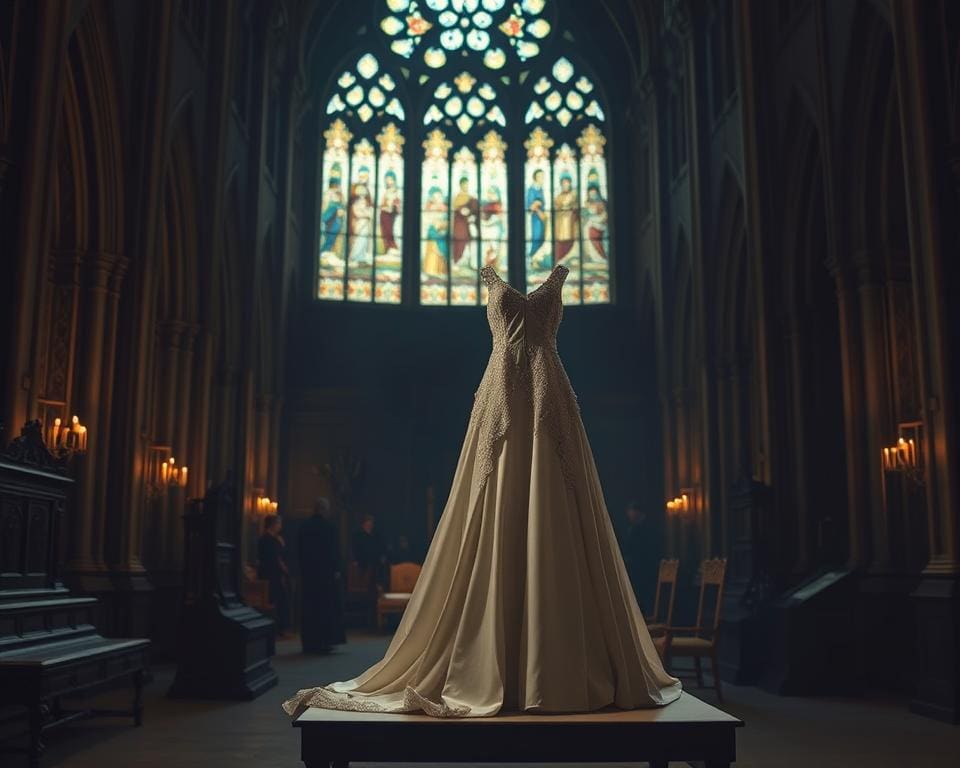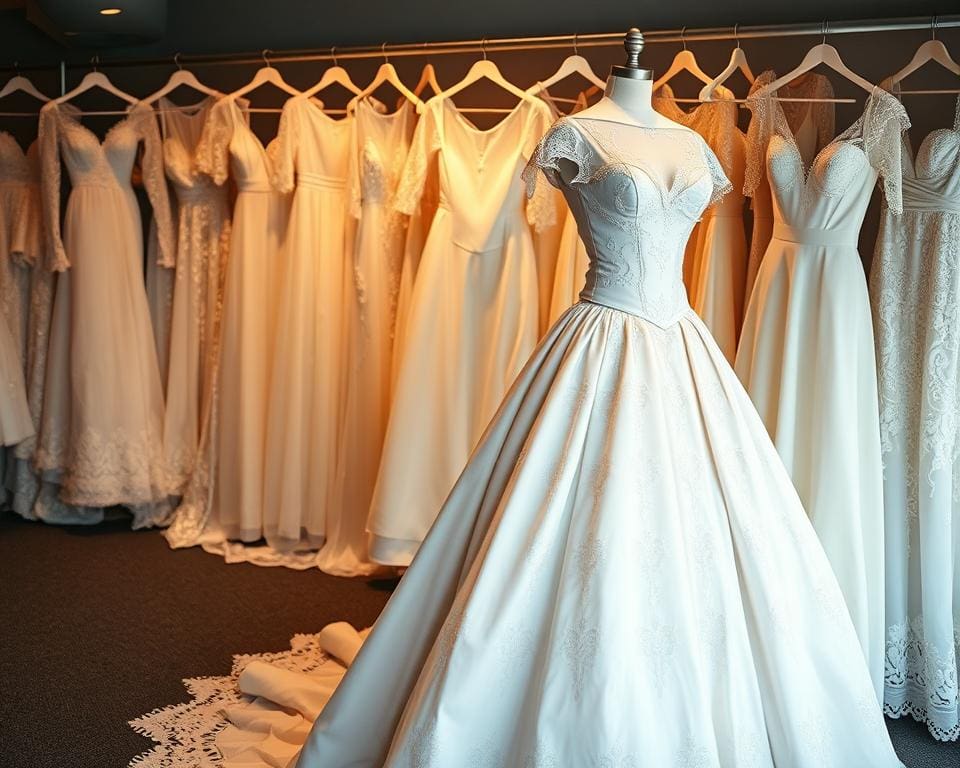The tale of white wedding dresses is both enchanting and transformative, reflecting deep cultural significance and rich history in bridal fashion. As we explore the question of when white wedding dresses came into fashion, it’s captivating to see how this colour transitioned from a rarity to a beloved staple for brides. The journey begins with an examination of the historical context and the societal importance attached to wedding attire, setting the stage for an exploration of key moments that defined the history of white wedding dresses. This timeless allure continues to influence bridal couture, embodying ideals of purity and elegance across various cultures.
The Origins of White Wedding Gowns
The origins of white wedding gowns trace back to a unique intersection of cultural practices and historical influences. Understanding the historical context of bridal attire reveals how societal norms and traditions shaped the garments worn by brides throughout the ages. Initially, wedding dresses did not adhere to a specific colour, with brides often choosing vibrant hues or their finest dresses for such a significant occasion.
Historical Context of Bridal Attire
Historically, bridal attire varied significantly across different cultures and eras. Brides typically wore colours that symbolised wealth and status. In medieval Europe, red and blue were popular choices, each carrying its own implications of power and femininity. The transition to white wedding gowns marked a notable shift in fashion. As marriages became more ornate, individuality and personal expressions started to emerge, highlighting the evolution of bridal fashion.
Influences from Royalty and Nobility
The influences from royalty and nobility cannot be overlooked in the narrative of white wedding gowns. The pivotal moment can be traced to Queen Victoria’s marriage to Prince Albert in 1840. Her choice of a white gown sparked widespread admiration and imitation. This decision reflected not only her personal taste but also introduced a new standard for wedding attire that prioritised purity and elegance. The impact of her choice resonated deeply, leading to a shift towards white becoming the norm in bridal gowns, thereby changing the landscape of wedding attire forever.

Evolution of Bridal Attire Through the Ages
The journey of bridal attire reflects the rich tapestry of human culture and societal changes. Over the centuries, the evolution of bridal attire showcases a fascinating narrative that intertwines tradition with innovation. Each era has contributed to the traditional wedding attire timeline, offering a glimpse into the values and aesthetics of the time. Progressively, shifts in fabric and style have been guided by advancements in technology, changes in fashion trends, and evolving cultural norms.
Traditional Wedding Attire Timeline
From ancient civilisations to the modern day, wedding attire has continually transformed. In classical Rome, brides adorned themselves in simple tunics, symbolising purity. The Middle Ages ushered in elaborate gowns made of luxurious fabrics and intricate details, showcasing the wealth and status of the bride. By the Victorian era, bridal fashion underwent a significant transformation as Queen Victoria popularised the white gown, marking a pivotal moment in the traditional wedding attire timeline. This change influenced many subsequent styles, aligning bridal wear with contemporary ideals of romance and virtue.
Shifts in Fabric and Style
The evolution of bridal attire involved considerable experimentation with various materials. The Victorian era saw the use of silk, satin, and lace, reflecting both opulence and craftsmanship. The Edwardian period moved towards softer fabrics, with flows and drapes that enhanced femininity. In recent times, designers have embraced technology, leading to the emergence of innovative fabrics such as tulle and organza, which allow for a more ethereal aesthetic. These ongoing shifts in fabric and style continue to redefine the essence of what a bridal gown represents, ensuring that each generation leaves its unique mark on the illustrious tradition of wedding fashion.
When Did White Wedding Dresses Come Into Fashion
The transition to white wedding dresses marked a significant shift in bridal fashion, primarily anchored in the mid-19th century. The momentous decision by Queen Victoria to wear a white gown for her marriage to Prince Albert in 1840 ignited a trend that would forever alter the landscape of bridal wear. Not only did this event raise questions about traditional attire, but it set in motion a phenomenon that embraced purity and elegance, thereby placing white gowns at the forefront of wedding fashion.
The Influence of Queen Victoria
Queen Victoria’s choice of a white dress, adorned with Honiton lace, defied the long-held tradition of brides wearing their finest garments irrespective of colour. This particular gown established a powerful symbol for forthcoming generations. As word spread about this royal wedding, brides of varying means began to emulate the Queen’s choice, which sparked discussions about the influence of Queen Victoria on wedding attire. The allure of her gown captivated hearts and minds, cementing white as the quintessential colour for brides.
Impact on Popular Culture and Society
The waves of change initiated by Queen Victoria’s fashion decision extended deep into popular culture and society. Over time, the trend of white wedding dresses infiltrated art, literature, and media, solidifying the image of the classic bride. Weddings became more than just personal ceremonies; they evolved into cultural spectacles that set societal standards and expectations. This impact on popular culture and society can be seen in countless depictions of brides in literature and film, cementing the white dress as an icon of love and commitment.
Significance of White Bridal Gowns
The significance of white bridal gowns extends beyond mere fashion choices. This symbol of purity and innocence is woven intricately into the fabric of wedding traditions around the world. While white has become synonymous with Western weddings, its meanings and interpretations can vary greatly across different cultures, reflecting unique values and perceptions regarding marriage and commitment.
Symbolism of Purity and Innocence
The symbolism of purity and innocence associated with white bridal gowns stems from historical roots. Traditionally, brides donning white were viewed as virtuous and untainted. This strong association has endured, often reinforcing ideals of a fresh start in the matrimonial journey. The striking whiteness of these gowns serves as a canvas, highlighting the hopes and dreams that accompany the union of two individuals.
Cultural Interpretations Across the Globe
Embracing the cultural interpretations across the globe reveals a rich tapestry of bridal traditions. In many Western contexts, the white gown has become a staple, signifying a bride’s transition into a new life. In contrast, cultures such as those in India often favour vibrant hues like red, symbolising love and prosperity. These diverse customs illustrate the multifaceted nature of bridal attire, reminding us that while the significance of white bridal gowns resonates deeply in some regions, other cultures offer rich alternatives that express individual beliefs and heritage.
Iconic Bridal Fashion Moments in History
Iconic bridal fashion moments have significantly shaped the world of weddings, showcasing stunning gowns that have become symbols of elegance and style. Famous weddings and their dresses have captured the imagination of many, illustrating how specific designs have become associated with celebrated occasions. The impact of influential designers in bridal fashion cannot be overlooked, as their creativity and vision have played pivotal roles in establishing trends and iconic looks.
Famous Weddings and Their Dresses
Throughout history, certain weddings have stood out for their breathtaking bridal gowns. For instance, Grace Kelly’s idyllic gown, designed by MGM’s Edith Head, enchanted millions when she married Prince Rainier III of Monaco. Similarly, Kate Middleton’s Alexander McQueen dress united classic elements with a modern silhouette during her royal wedding to Prince William. These famous weddings and their dresses have left lasting impressions and inspired countless brides.
Influential Designers in Bridal Fashion
The legacy of bridal fashion is closely intertwined with influential designers in bridal fashion. Names like Vera Wang and Monique Lhuillier have transformed the wedding dress landscape through their innovative designs, making their creations synonymous with glamour. Their unique styles have inspired many brides to choose unconventional elements, embracing creativity while still paying homage to traditional models. These designers have helped shape the notion of what a modern bridal gown represents, merging the past with the present.
Timeline of Wedding Dress Trends
The evolution of wedding dress trends reveals a remarkable tapestry of history, artistry, and cultural significance. From the lavish gowns of centuries past to the contemporary designs that adorn modern brides, the timeline of wedding dress trends highlights how key eras and their influences have shaped what we see today. Understanding this evolution enriches the appreciation of modern bridal fashion and the continuing transformation of societal norms surrounding marriage.
Key Eras and Their Influences
Each key era in bridal fashion has contributed distinctive elements to wedding dress styles. The Victorian era marked the introduction of white dresses, heavily influenced by Queen Victoria’s choice of lace and silk. The soft A-line silhouette became popular during the Edwardian period, emphasising elegance and femininity. The flapper dresses of the 1920s showcased a shift towards more relaxed styles, reflecting changing social dynamics.
Subsequent decades introduced a variety of influences:
- The 1950s featured structured silhouettes, epitomised by designers like Christian Dior.
- The 1970s embraced bohemian styles, promoting individuality and personal expression.
- The 1980s popularised extravagant designs, with voluminous sleeves and abundant embellishments.
- The minimalist trends of the 1990s offered clean lines and simple fabrics.
This rich blend of styles showcases the rich history of wedding fashion and the various social Movements that have left their mark on design choices.
The Rise of Modern Bridal Fashion
The rise of modern bridal fashion reflects a significant shift in attitudes towards marriage and femininity. Current trends emphasise inclusivity, featuring non-traditional silhouettes that allow for personal style and comfort. The availability of diverse sizes and styles enhances the experience for all brides, moving away from uniformity. Contemporary designers such as Vera Wang and Hayley Paige have pushed boundaries, integrating bold colours, unique fabrics, and groundbreaking designs.
This evolution is not just about aesthetics; it mirrors a broader cultural movement embracing authenticity and individual choice in wedding attire. The rise of modern bridal fashion champions the idea that each bride’s journey is unique, allowing for diverse expressions of love and celebration.
Cultural Significance of White Wedding Dresses
The cultural significance of white wedding dresses is far-reaching, reflecting deeper meanings than mere aesthetics. These garments have transcended the fabric and become enduring symbols of love and commitment, often embodying the dreams and aspirations of countless brides. In contemporary society, the white wedding dress serves as a canvas for personal expression, allowing individuals to showcase not just tradition but also their unique identities within the sacred institution of marriage.
Within various cultural narratives, the significance of white bridal gowns continues to evolve. While they primarily signify purity and innocence in many Western cultures, different traditions interpret these symbols in diverse ways, often integrating local customs and beliefs into the wedding attire. This ongoing metamorphosis highlights how the cultural significance of white wedding dresses can vary across societies, yet maintaining the core concept of a cherished union.
As weddings evolve, the cultural significance of white wedding dresses remains pertinent, influencing bridal fashion trends around the world. Modern designers push boundaries to blend traditional expectations with contemporary styles, illustrating how fashion shapes personal identities. Ultimately, the white wedding dress is not only a garment but a powerful emblem of love, individuality, and the ongoing journey of marriage within the tapestry of cultural expression.









